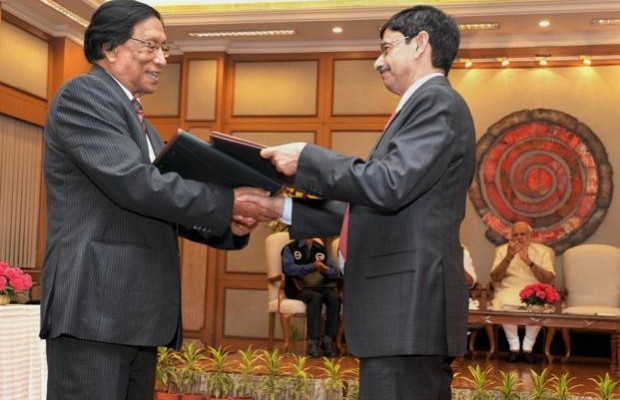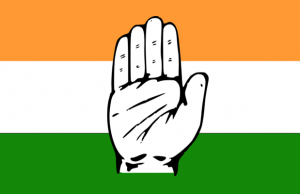HALF-COOKED MIRACLES

In the afternoon of last Monday, August 3, media persons across the country received a message on their cell phones that prime minister Narendra Modi is going to make a very important announcement at 5.30 in the evening. There was a strong sense of pride pouring from the face of our prime minister while ‘saluting the Naga people for beginning a new glorious chapter’. On the occasion of signing the ‘Naga Accord’ at his residence Modi did not forgot to tell the nation that how he has solved a six-decade-old problem, how after assuming office around a year back he asked his office to supervise the talks and how he personally kept in touch with the progress. Dressed with a colourful touch of Naga style our prime minister also reminded us that how the Naga problem has been one of the tragedies of Independent India, how we have lived with this legacy, how there were not many like Mahatma Gandhi who loved the Naga people and were sensitive to their sentiments and how peace, security and economic transformation of North East have been amongst his highest priorities in last one year.
I was thrillingly amused to watch Narendra Bhai achieving another ‘historical miracle’ within 14 months of grabbing over the prime ministership of our great nation. I was also admiring him for the blissful self-confidence he has that ignorance injects into a person. Modi is obsessed to make the nation believe again and again that whatever has been achieved by the country is the outcome of his tireless efforts and nothing was done before May 26, 2014, in independent India.
The accord signed between the Government of India and the NSCN(I-M), a leading Naga group, is not the first one to end what is definitely the country’s first ethnic insurrection. Narendra Bhai conveniently forgot the fact that 40 years back, in 1975, an agreement with the Naga National Council was signed in Shillong when Indira Gandhi was prime minister. This pact was designed to pave the way for a final settlement of the Naga problem.
T Muivah and IC Swu had described the 1975 accord as a “sell out” and vowed to fight on. successive Congress governments kept on making peace efforts in Nagaland in other North-Eastern states with different armed groups. Interlocutors appointed by Congress governments for Naga talks played their remarkable roles. These talks went on for several years. The secret talks were held with Naga rebels at their hideouts in Nagaland, in neighbouring countries and places in European countries. Muivah and his lieutenants had several rounds of talks with officials during Congress-led UPA government between 2004 and 2014 at different safe houses of intelligence agencies in New Delhi as a result of that a Temporary Ceasefire Agreement was signed on July 31, 2007, between NSCN-IM and the then Congress Government headed by Dr Manmohan Singh.
There were occasions during 2011-13 when Naga leaders wanted to go for an accord immediately and the then prime minister to make an announcement for the same from the rampant of the red fort on independence day. But, Congress was mature enough to not go in haste and take and give a serious thought to the opinions of the political leadership of other North-Eastern states, an exercise necessary in a democracy to take into confidence all the affected sections, which is deliberately ignored by Modi because he is in a hurry to take the sole credit of the ‘accord’ when he stands on the red fort this 15 August. A section of Naga leaders has thanked Modi for ‘understanding the Nagas’ and our always ready to pat his own back prime minister has claimed that accord is ‘historic’ but none of them has disclosed the details of the ‘accord’.
The provisions of all accords, such as the Assam Peace Accord on 25 August 1985 and then the Mizo Peace Accord on 25th June 1986 by late Shri Rajiv Gandhi had been made public. The lid on Monday’s accord has raised several questions about the possible provisions of the accord and about why it has not been made public. The accord comes within four months of the reneging of the ceasefire by the Khaplang faction of the National Socialist Council of Nagaland (NSCN-K)—the one opposed to the Muivah-Isak faction. This faction is led by Burmese rebel Naga rebel leader S.S. Khaplang, who now has a fraternal alliance going with several other Northeast Indian rebel groups.
Since Khaplang broke away from the ceasefire, his fighters have been joined by United Liberation Front of Asom (Ulfa) and some Meitei groups in attacking Indian troops. Thirty soldiers have died in these attacks—18 in one strike in Manipur in June. The NSCN (I-M) has been negotiating with the government since 1997. They had climbed down from the original Naga separatists’ demand for independence. But they are keen that their demand for a greater Naga state—the Nagalim—should be accepted. They want Nagalim to be formed by merging the Naga-dominant areas of Manipur, Assam and Arunachal Pradesh. How Modi would be able to go ahead in this direction when even Atal Behari Vajpayee had found it difficult in 2001?
The Monday accord seems to have worked on providing the Nagas greater autonomy — both for the state of Nagaland and for the Nagas areas of the three neighbouring states of Manipur, Assam and Arunachal Pradesh. Alongside the autonomy provisions, the accord would provide some ways to link the Nagas of the neighbouring states with the state of Nagaland, at least culturally. The reason for not letting the details of the accord out is because the mode of implementing it is not yet finalised. A top lawyer who advised the NSCN (I-M) during the negotiations feels that real challenge begins now.
Unlike in Mizoram, where Rajiv Gandhi signed the 1986 accord with the entire MNF leadership and that is why the accord seems to have delivered, Modi’s Naga accord may focus on delivering largely for the Indian Nagas. There is no way Modi can deal with Khaplang, who is a Burmese national. But if the breakaway factions of the Khaplang group had been involved in the settlement, it would have been easier to implement it in Nagaland. It was clear even from the official speech of Muivah that this is not the end when, after signing the accord he avoided facing the camera directly and repeated the very similar sentence that has been used since past several years that an honourable peaceful solution is yet to be worked out. But, Narendra Bhai was a man in a hurry. He wanted this feather in his cap before Independence Day. So, let the nation celebrate a half cooked accord.
The Author is Editorial Director of Global India Investigator




You must be logged in to post a comment Login